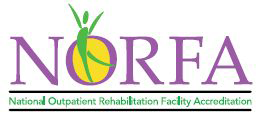A Guide to Hearing Loss
Early Signs and Symptoms
According to the National Institute of Health (NIH), 2-3 children out of 1,000 in the United States are born deaf or hearing impaired. If you suspect that your child has a problem hearing have your child evaluated by an audiologist immediately. Early intervention plays a major role to help identify hearing loss in its early stages. Ensure that your child receives professional speech therapy services that will assist him or her in developing effective communication skills. Learn to recognize the signs in babies and older children, as they may vary:
- Fails to respond when his/her name is called
- Fails to respond to loud, startling noises (e.g., the sound of glass breaking)
- Speech is unclear, making it difficult to understand
- Exhibits frustration when others are speaking
- Complains about headaches and earaches
- Speech is noticeably different from that of other children
- Fails to respond to changes in your tone of voice
- Points to objects rather than verbally naming them
- Turns up the TV and radio volume to high levels
- Asks you or others to repeat themselves
- Exhibits academic problems in school
Potential Known Causes
Some children are born with hearing loss due to genetic factors and others acquire it during pregnancy or after birth through non-genetic factors. Premature birth, or birth at 37 weeks of pregnancy or earlier, is a non-genetic factor that may have hindered your child’s auditory system from fully developing in the womb.
Illness during pregnancy can also play a harmful role in the development of the auditory system and its proper function. It may cause a child to be born deaf or with mild to profound hearing loss. We strongly suggest taking your child for a hearing evaluation if you contracted and/or developed any of the conditions listed below while your child was still in the womb:
- Cytomegalovirus (CMV)
- Herpes infection
- Toxoplasmosis
- Syphilis
- Rubella
- Lack of oxygen (anoxia)
- Maternal diabetes
Your child could present with other forms of non-genetic causes, referred to as after birth causes. If any of the causes below are reported in your child’s medical history, visit an audiologist to determine whether or not he or she has hearing loss.
- Structure malformation of inner ear
- Ear infections (otitis media, OM)
- Head injury
- Ear tumors
- Chickenpox
- Meningitis
- Measles
Under normal circumstances, your baby should become startled by loud noises, like the sound of glass breaking or someone yelling. When hearing loss is present, however, your child may not react at all. Infants with significant hearing loss do not respond to familiar voices and fail to verbalize single words by the age of 15 months.
Remember that your child can develop hearing loss at any age due to recurrent ear infections, continuous exposure to loud noises, head injury and injury to the ear by Q-tips, a pencil or other objects.
Most Common Types of Hearing Loss
There are three major kinds of hearing loss which present in different areas of the ear: conductive, sensorineural and mixed. Let’s review the three categories:
Conductive Hearing Loss
Characterized by the interference of sound passing through the outer or middle ear, causing a reduction in sound level, with causes that include:
- Ear infection (otitis media)
- Poor Eustachian tube function
- Allergies
- Impacted earwax
- Benign tumors
- Presence of a foreign object
- Perforated eardrum
Sensorineural Hearing Loss (SNHL)
The most common type of permanent hearing loss, manifesting when damage to the inner ear (cochlea) and/or nerve pathways to the brain has occurred. It is usually associated with profound hearing loss and causes that include:
- Head trauma
- Exposure to loud noise
- Meniere’s disease
- Tumors
- Malformation in the inner ear
- Autoimmune inner ear disease
Mixed Hearing Loss
A combination of conductive and sensorineural hearing loss in which damage presents in either the outer or middle ear and either the cochlea or auditory nerve.
Early Intervention at Hope
We commit to work with your child, family, physician, audiologist, parent infant program and all involved to help make this journey a little easier. We will take you through the process from initial diagnosis to development of an appropriate communication system.


